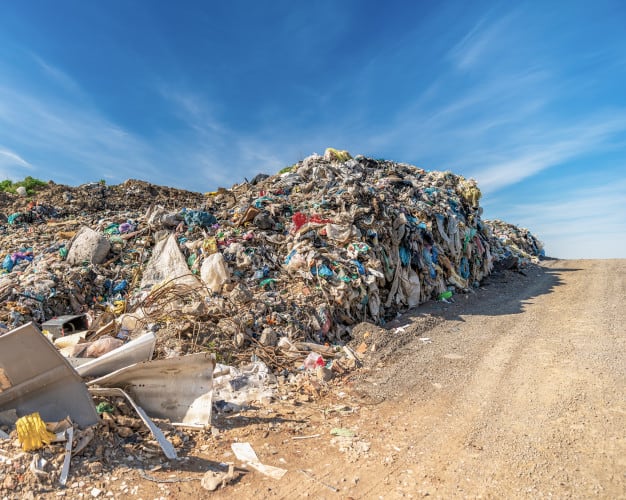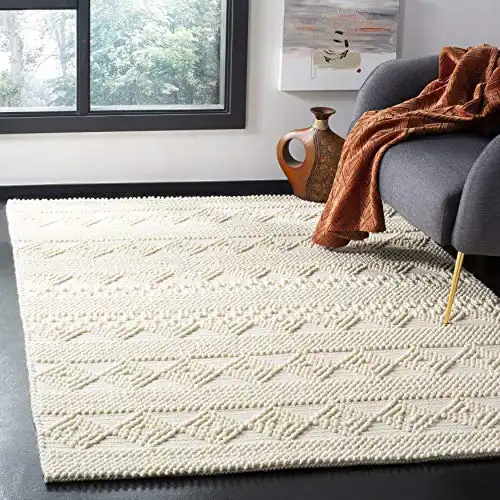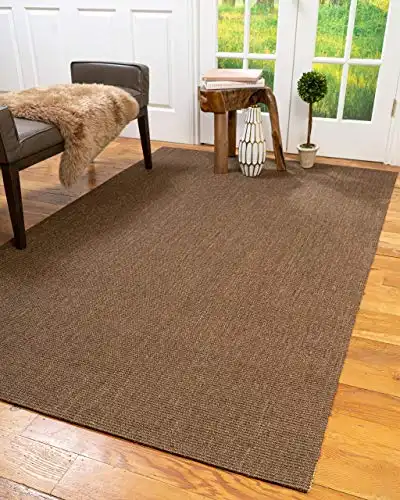Are Polypropylene Rugs Toxic?
Disclaimer: As an Amazon Associate I earn from qualifying purchases.
In this article, we will answer the question of whether polypropylene rugs are toxic. They are made from derivatives of petroleum and are chemically treated with various compounds that may have a negative effect on human health and the environment.
Polypropylene is a type of plastic that has been around for many years, yet it's only in recent decades that people have become aware of its toxicity as well as its potential to pollute our water sources and soil.
What is Polypropylene?
Propylene is made from a polymer of the monomer propylene. Polypropylene is quite common in packaging, labels, textiles and reusable containers. This compound is made from derivatives of propylene and is resistant to damage.
Polypropylene is a thermoplastic material that can be stretched up to four times its original length before it will break. It also has good resistance to chemicals and humidity.

What Are Polypropylene Rugs Like?
Polypropylene rugs have some very appealing qualities, including:
On the other hand, there are a few drawbacks to polypropylene that should be noted:
Read More: Best Organic Cleaning Products for Your Home
What Is the Impact of Polypropylene Rugs on the Environment?
Although polypropylene carpets or rugs only last about 2-5 years before being replaced with new ones, their life span continues once they enter a landfill site because the material can survive hundreds of years without biodegrading.
During the decomposition process, a polypropylene rug will release toxic chemicals into the soil and water. The environmental impacts from these chemicals can range in severity, depending on the location of disposal.
This makes it one of the more serious environmental problems since most people would never think twice about what happens after throwing out old carpeting or furniture containing polypropylene plastic fibers.
Another thing to consider is that when a synthetic rug is washed in a washing machine, its particles will be released into the water system and eventually end up in our rivers, lakes and oceans, increasing microplastic pollution.
The impact of polypropylene rugs on the environment is something that should be taken into consideration before making your final decision about what type of floor covering you want in your home or office.

Best Non Toxic Polypropylene Rug Alternatives
The best alternatives to polypropylene rugs are rugs made of natural materials, such as wool, sisal or jute. Each of these materials has got different qualities that make them appropriate for different types of uses. However, they're all biodegradable, making them a much more eco-friendly choice than synthetic rugs.
Also, their fibers are much more resistant and durable than propylene rugs. Another advantage of these natural rugs is that they won't release any toxic chemicals so they're a safer and healthier choice for you and your family. So although they are much more expensive than synthetic rugs, they're an investment worth every cent.
If you need a rug pad to keep your rug in place and protect the floor, choose a non-toxic rug pad with Green Label Plus certificate or a natural one made of natural latex and jute.
Read More: Best Non-Toxic Deodorizers for Carpets and Rugs
Jute Rugs
Jute is a soft fabric that’s perfect for lower traffic areas of the home. It resembles wool in its softness and can be used as an eco-friendly alternative to natural fibers like cotton, linen, or silk.
One downside to it though? The material may shed after being washed so you might want to vacuum frequently if this happens! Check out our list below on some really nice jute rugs:
Wool Rugs
Wool is the most common material used for rugs. It’s biodegradable, hypoallergenic and naturally flame-resistant so there's no need to use harmful chemical treatments on it! Wool is also durable - if you take care of your wool rug properly, wool will last a long time without looking worn out.
But like anything else that has strong qualities, they come with unfortunate drawbacks: although it´s water repellent by nature, wool becomes prone to mildew when constantly exposed to humidity so only use it in dry areas, such as your living room or bedroom.
Read More: Polypropylene Rugs vs Wool Rugs
Sisal Rugs
Sisal is a natural material that's durable and easy to maintain. It doesn't need any chemicals, but watch out for where you put it in the house because, with time, it can get slippery, so avoid putting it on the stairs or in your kids' room.
Sisal also absorbs things so tough stains might be tricky to remove. For this reason, don't use it in your kitchen, dining room or bathroom. There are plenty of beautiful non-toxic sisal rugs around made by people who care about what they do:
So Are Polypropylene Rugs Safe?
The answer is no. Although synthetic rugs are a popular choice for many homeowners and businesses because they’re affordable and easy to clean, they have some negative aspects that should definitely be taken into consideration before making your final decision on the type of floor covering you want for your home or office.
One of the most concerning is the presence of dangerous chemicals that could negatively impact your health as well as Mother Earth's. If you're concerned about potential risks associated with these types of carpets, then we recommend buying a natural non toxic rug made of wool, jute or sisal.
We'd love to hear about your experiences with polypropylene as well as natural rugs. What are the main differences you noticed? What are your favorite rug brands? Share your story in the comments below. Also, if you've got any questions about non toxic rugs, please use the comment section below.
Read More: How to Speed Up Carpet Off-Gassing?







